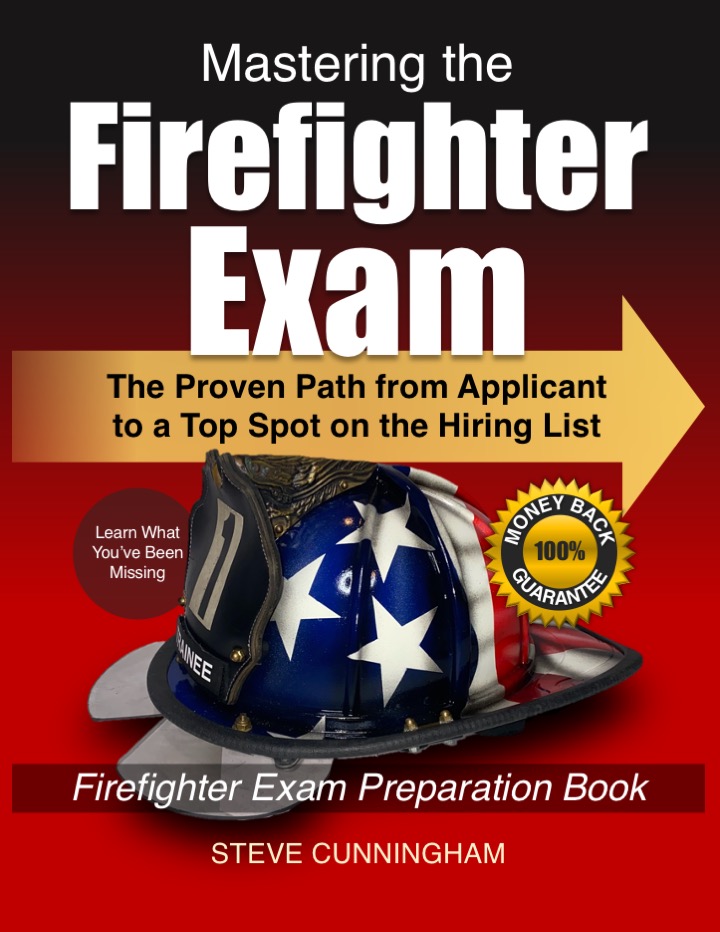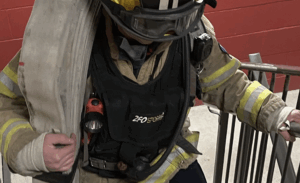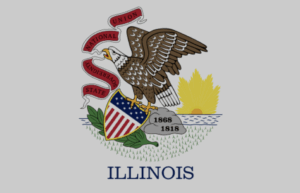Embarking on a career as a firefighter isn’t just about physical fitness; it’s also about ensuring your readiness to serve and protect your community. Welcome to our guide on the firefighter medical evaluation, where we delve into the critical aspects of this essential assessment.
Discover the importance of this evaluation, what to expect, and how to prepare for it. Your journey to becoming a firefighter starts with your health, and we’re here to guide you every step of the way.
Aspiring firefighters, your journey toward this honorable profession involves a critical checkpoint: the firefighter medical evaluation. Why should you pay close attention to this crucial aspect of your preparation? Here are two compelling reasons:
- Health and Safety: Your well-being and the safety of those you’ll protect hinge on your physical and mental fitness.
- Career Readiness: Understanding this evaluation ensures you’re fully equipped for the challenges and responsibilities.
In the following sections, we’ll navigate the terrain of firefighter medical evaluations, shedding light on what to expect, how to prepare, and why this knowledge is integral to your firefighter journey.
Table of Contents
The Medical Evaluation
The medical evaluation is usually the last step. You’re traditionally notified after the background investigation and before a candidate is accepted into the fire academy. It can be a significant factor during the recruitment process.
It includes a medical history, lab tests, and a medical exam – and is conducted by a doctor to assess your physical and mental ability to perform firefighter duties safely for your health and the health of others.
Suppose you are contacted about the medical evaluation or receive a medical evaluation packet. In that case, it likely means you have been made a conditional job offer, contingent on the medical evaluation results. Usually, evaluations are only given to candidates medically cleared for ultimate employment.
What to Expect During the Medical Evaluation
During the firefighter medical evaluation, candidates can anticipate a comprehensive assessment of their physical and medical fitness to perform the demanding duties of a firefighter.
This evaluation typically includes a thorough medical history review, physical examination, and a series of tests. You can expect questions about your medical history, lifestyle, and pre-existing conditions.
The physical examination will assess your overall health, mobility, and strength, focusing on your cardiovascular and respiratory fitness.
Candidates should also be prepared for various tests, such as vision and hearing assessments, blood pressure checks, and lung function tests.
Also, you should expect to undergo laboratory tests, including blood and urine analyses, to detect underlying medical issues.
The goal of the evaluation is to ensure that you are physically capable and in good health to meet the rigorous demands of the firefighting profession, protecting both your well-being and the safety of those you serve.
The Purpose of the Medical Evaluation
The primary goal of the medical evaluation for firefighter candidates is to assess their physical and mental health to determine if they can safely and effectively perform their duties. Firefighters often encounter physically demanding and hazardous situations, so good health is essential.
Components of the Medical Evaluation
1. Physical Examination
Candidates can expect a comprehensive physical examination covering various health aspects. This may include checking vital signs, assessing vision and hearing, and evaluating overall physical fitness.
2. Cardiovascular Assessment
A crucial part of the evaluation focuses on the candidate’s cardiovascular health. This includes an ECG to assess the heart’s electrical activity and a stress test to evaluate how the heart responds to physical exertion.
3. Respiratory Evaluation
Firefighters are exposed to smoke and hazardous fumes, so respiratory health is paramount. Candidates may undergo pulmonary function tests to assess lung function and capacity.
4. Musculoskeletal Assessment
The musculoskeletal system is closely examined to ensure candidates have the physical strength and flexibility required for firefighting tasks. This may involve assessing joint mobility, muscle strength, and posture.
5. Mental Health Assessment
Mental health is just as important as physical health for firefighters. Candidates may be asked about their mental well-being and undergo psychological assessments to identify any potential issues that could impact their performance or safety on the job.
6. Immunizations and Medical History
Candidates are often required to provide their medical history and immunization records. This helps ensure that they are up to date on vaccinations and free from any medical conditions that could jeopardize their health or the health of their colleagues.
What are the Minimum Medical Requirements to be a Firefighter?
Most departments follow the recommendations outlined in the National Fire Protection Association (NFPA) 1582 Standard on Comprehensive Occupational Medical Programs for Fire Departments.8
This standard sets the pre-employment medical/fitness standards often used for firefighters. The ultimate criterion is that entry-level firefighters must execute duties and assignments safely to themselves and others, with expediency and accuracy.
NFPA 1582 contains a list of essential job tasks you must be able to perform as a firefighter and includes but is not limited to the items listed in the following chart.
Minimum Medical Requirements8
- While wearing firefighter personal protective equipment (PPE), a firefighter must perform firefighting tasks, rescue operations, and emergency response operations under stressful conditions, including hot and cold exposure.
- A firefighter must have the ability to wear a self-contained breathing apparatus (SCBA), demand-valve positive pressure face-piece, HEPA-filtered mask, and tolerate increased respiratory workloads.
- A firefighter may experience exposure to toxic fumes, irritants, infectious substances and heated gases despite using SCBA.
- The ability to climb six flights of stairs with PPE and SCBA weighing 50 pounds (22.6 kg) plus tools 20-40 pounds (9-18 kg).
- The ability to wear PPE and SCBA and tolerate significant fluid loss and dehydration, as well as core temperature above 102.2 Fahrenheit (39°C).
- The ability to wear PPE and SCBA and perform search and rescue, carrying victims up to 165 pounds in hazardous, low visibility conditions.
- The ability to wear PPE and SCBA and pull hose lines approximately 150 feet upstairs, ladders, and other obstacles.
- The ability to wear PPE and SCBA and climb ladders, operate at heights, crawl in the dark on narrow or uneven wet or icy surfaces, and operate near electrical power lines and other hazards.
- The ability to handle unpredictable extreme physical exertion without warm-up, scheduled rest, meals, medications, or hydration.
- The ability to operate fire apparatus or other vehicles in emergency mode with lights and sirens.
- The ability to deal with time-sensitive problem-solving during physical exertion in stressful, hot, dark, hazardous, tightly enclosed spaces is made more difficult by fatigue and distractions.
- The ability to communicate in full gear with background noise, poor visibility, and large amounts of water from suppression efforts.
- The ability to function as part of a team, where sudden incapacitation of a member can cause injury or death to the crew or the public.
- The ability to work shifts over 12 hours, including at night.
Note: This is a summary of NFPA 1582’s essential job tasks of a firefighter. NFPA standards are not mandated but are adopted as best practices by most fire departments.
Every fire department has its own unique firefighter job description, including essential job tasks. Review the requirements that dictate the fire department’s decision-making process specific to the jurisdiction.
To obtain a copy of NFPA1582, visit the NFPA website at www.nfpa.org
See NFPA1582 Chapter 7 for volunteer, paid on-call, part-time, or career firefighters.
What are doctors looking for during the medical evaluation?
The medical evaluation is designed to:
- Ensure that a candidate doesn’t have a medical condition that will prevent them from performing the essential duties of a firefighter.
- Ensure that a candidate doesn’t have a medical condition that will present a significant risk to the safety and health of the person.
- Please make sure that a candidate has no medical condition that will jeopardize their health.
and safety of others. - Gain a baseline for the medical performance of a candidate’s career.
The Firefighter Medical Evaluation is a comprehensive assessment designed to ensure that firefighter candidates are physically and medically fit to perform the demanding tasks of the profession.
The medical evaluation includes:
- Medical History Review: Candidates provide a detailed medical history, including pre-existing conditions.
- Physical Examination: A comprehensive physical assesses general health, mobility, and fitness.
- Vision and Hearing Tests: Ensure candidates meet the required standards for vision and hearing.
- Vital Signs and Blood Pressure: Measure blood pressure and vital signs.
- Lung Function Tests: Assess respiratory health and capacity.
- Blood and Urine Tests: Check for medical conditions and substance abuse.
- Drug and Alcohol Screening: Verify candidates are substance-free.
- EKG/ECG: Evaluate heart health with electrocardiograms.
- Fitness Assessment: Test strength, endurance, and agility.
- Psychological Evaluation (if required): Assess mental fitness for firefighting.
- Immunization Verification: Confirm up-to-date vaccinations for infectious disease protection.
It’s important to note that the specific components of the Firefighter Medical Evaluation may vary from one department to another.
Preparing for the Medical Evaluation
Preparing for the Firefighter Medical Evaluation
To get ready for the medical evaluation component of firefighter testing, candidates should follow these clear steps:
- Physical Well-being
Maintain a healthy lifestyle by eating well, staying physically active, and effectively managing stress. - Medical Consultation
Seek guidance from a healthcare professional to address any existing medical conditions or concerns. - Honesty is Key
During the evaluation, provide an honest and comprehensive medical history and information. - Document Gathering
Collect any required medical records or documentation as specified by the testing agency. - Physical Fitness
Stay in good physical shape. This is crucial for getting hired, succeeding in the fire academy, and maintaining fitness throughout your career. - Timely Action
Start filling out the medical health history packet promptly upon receiving it. This packet resembles what you might complete at a clinic or hospital but may involve more detail. Gather supporting documentation for any pre-existing conditions. - Year-Round Health Focus
Maintain a healthy lifestyle and diet consistently throughout the year. Be mindful of what you consume and avoid alcohol and illegal substances, including performance-enhancing and recreational drugs, as these may be detectable in your lab tests.
How does the Americans with Disabilities Act (ADA) work in the fire service?
The ADA (passed in 1990, updated in 2008, and again in 2010) was designed to increase disability awareness and promote the inclusion of individuals with disabilities, including public safety positions.9
The Act has had many positive results. Candidates should be aware that the ADA requires that an applicant with a disability be qualified for the position, which includes the essential job functions listed earlier.
State regulations can prohibit candidates with certain physical or psychological conditions found during the firefighter assessment process from pursuing careers as firefighters – but cannot discriminate against an otherwise qualified applicant.
If you are a candidate with a disability, you can make an accommodation request. You’ll need to provide specific documentation detailing the impairment and how the disability will affect you as a firefighter candidate.
Suppose you have a disability and are interested in the fire service. In that case, I’d like you to please seek a clear understanding of the regulations in your state and how those regulations affect your capacity to become a firefighter.
What happens if you don’t pass the medical evaluation?
Medical examinations have been known to screen out candidates who are found to be unsuitable for the position. If a candidate fails a medical exam or test, the path to retest or be re-evaluated by a second-party physician will depend on the policies specific to that fire department.
There are typically several tests, conditions, and disabilities that could preclude a candidate from being hired as a firefighter.
If there are any issues with your medical exam, “find out” the medical problem – both for your health and to understand why it would prevent you from being hired. Perhaps it is something that you can overcome.
I have heard of candidates who failed the medical exam because of abnormalities on their EKG or Pulmonary Function Test. These abnormalities may not adversely affect your health or your ability to perform the duties of a firefighter. However, a general doctor may not have the specialized knowledge to make that decision or the authority to overrule the results of the tests.
What if you are flagged with a condition that may impact your hiring ability? You could consider seeking an evaluation by a specialist to understand the issue better. You may have to cover the cost of this evaluation.
Many departments allow a candidate to be evaluated by a specialist. If a candidate is cleared, they may be able to proceed with the rest of the assessment and ultimately get hired.
Summary
If you receive a notification or information packet about a medical evaluation, you may have been made a conditional job offer.
The medical evaluation component of firefighter testing is a rigorous but necessary step to ensure the safety and effectiveness of candidates on the job. By assessing physical fitness, cardiovascular health, respiratory function, mental well-being, and more, fire departments can select candidates who are physically and mentally prepared for the demanding challenges of firefighting.
Candidates should approach the medical evaluation with a commitment to maintaining good health and honesty in sharing their medical history. Ultimately, passing this evaluation is a significant milestone in becoming a firefighter and serving their community with honor and dedication.
Key Takeaways
- Know the fire department’s job description, including essential job tasks. These tasks are the same used to assess candidates for the medical evaluation and are typically outlined in NFPA 1582.
- Prepare for the examination by training your mind and body while living a clean and healthy lifestyle.
- Complete your medical history and evaluation packet, with proper documentation, before your medical examination.
- If you are concerned about anything in with your medical evaluation, contact the city’s Department of Human Resources for more information.
Learn How You Can Become A Full-Time Firefighter

Mastering the Firefighter Exam is a complete guide on how to pass the firefighter exam with a top score. It simplifies the complicated hiring practices of big city fire departments and reveals insider information most candidates don’t know about.
If You Would Like To Know How To Get A Head Of Your Competition, This Book Is For You.
References
- National Fire Protection Association. NFPA 1582 Standard on Comprehensive Occupational Medical Program for Fire Departments. https://www.nfpa.org/codes-and-standards/all-codes-and-standards/list-of-codes-and-standards/detail?code=1582 (07/08/21 Accessed.)
- American with Disabilities Act. ADA United States Department of Justice Civil Rights Division. www.ada.gov (07/08/21 Accessed.)







